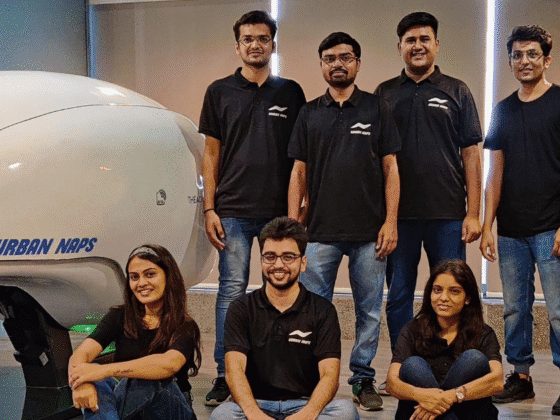Fixed wireless access-How FWA is the future of the broadband

The expectations are usually high at the dawn of a certain technological era. Such is also the case of 4G being overtaken by better tenacities. From using our Symbian phones on GPRS networks to buying the latest devices with 5G enabled light-speed connections, we have come a long way across the spectrum of communication technology. With FWA ruling the market of today, we can see a revolutionary change in broadband and its prospects. Let’s explore this in detail.
What is it?

Fixed Wireless Access is a technology that works on radio waves transmission to provide high-speed internet connectivity. A base station is the focal point of such a type of transmission. The person utilizing FWA has a receiver or an antenna installed outside the building which is connected to the router setup indoors. The internet signals come from the base station and then the antenna transmits them to the router. Consumers might think that FWA is identical to setting up a Wi-Fi router. However, the speed it offers and the ease of deployment sets it a class apart.
Some stats about it
While India is still preparing to realize the potential of FWA, other countries are far ahead in the race. Increasing competitive prices have compelled various users to shift towards FWA solutions. As per the stats, around 7 million households are already using FWA in the US. In the first quarter of the current year, giant companies such as T-Mobile are already smiling on millions of FWA installation requests. There are lakhs of subscriptions being added. As compared to FTTH, FWA is expected to compromise a large number of broadband connections all across the world.
India is not far behind. The communication department has recently announced its way of doing things by combining FWA networks with 5G connectivity to reach most remote areas in the country. Various sector arrangements necessitate seizing this opportunity and growing in terms of networking.
It creates social value

Uninterrupted broadband connectivity is an important driving force for economic growth. Through FWA, broadband connectivity can be accessed in the regions that were not covered by networking earlier. This way, FWA will enable national and economic growth. As the connectivity gets integrated, access to information will be a sinecure. This will lower the cost of communication. Going further, the communication medium will offer an effective means to bridge the gap between households, individuals, businesses and companies across various geographic areas.
It will be done at various social-economic levels. With better opportunities to ICTs (information and communication technologies) and the worldwide web, better growth can be archived both socially and professionally.
An important thing to note here is that to reduce the equalize the ways of using the internet, a good speed is required. FWA will provide this and will help overcome the biggest challenge of the Digital Divide (the lack of internet knowledge).
It offers better business opportunities

With the rise of OTT platforms and various streaming apps, the need for a good broadband speed is increasing day by day. Since the infotainment companies are willing to offer greater picture qualities with formats such as UHD, Dolby Vision, and 4k, the consumer needs accurate, incessant and high internet speed to enjoy such content. This particular need, when fulfilled by FWA, can give rise to revenue growth for various companies. With FWA technology, many other services can be bundled into the offerings such as Voice over IP and live streaming in the highest quality.
FWA also helps companies offer connectivity to customers through superior wireline infrastructure. This will help facilitate the digital transformation of small and large-scale companies. While companies can get connectivity in inaccessible areas, they can also extend their connection reach through the wireless setup technology of FWA.
Another important business opportunity lies in connecting transport networks to central offices. Various remote nodes that aid transport networking can be emphasized and enhanced using FWA routers.
It brings cost-effectiveness and ease of deployment
Unlike its contenders, FWA comes with relatively low operational as well as deployment costs. Where wireline or fabric structures come with additional installation charges, FWA will offer less hassle and competitive pricing. The total costs, as estimated by global networking companies, of FTTx are twice as higher as FWA. Also, the FWA will charge less to the subscriber as compared to FTTx or traditional broadband modes. This also points out that the economics of FWA is not that good which accounts for its lower cost.
However, it will offer plenty of advanced capabilities that will make up for the lack of legacy infrastructure that we get in DSL networks. Having said that, some of the driving forces of FWA here include higher bandwidth, low latency, quad-play features and so on.
Many companies who are into the deployment of FWA modules hint that the cost of one Bit to connect a household to the broadband may be reduced by 70% using FWA in comparison to the wireline setups. And since FWA runs on radio wave signals, many relating technologies will come into the picture such as MIMO or 3D beamforming. These will further reduce the costs of installation.
When FWA is deployed, the reduced civil engineering accounts for maximum cost-saving. Networking civil engineering, which is already a challenge in many remote areas, is the most complicated and incurring component of networking operations. In India, the lines are laid down beneath the ground which calls for a huge manforce and labor work.
The challenges
While FWA seems good in all aspects,it is still out of the reach of people, especially in a country like India. The first challenge it’s bound to face lies in the frequency choice of FWA. The networking module uses a very high-frequency range above 20GHz. These do procure the highest speeds on the planet but they have very low penetration power. This can be a setback for people who wish to use the internet in closed spaces or indoors.
The penetration power can further be reduced if there are building materials that often tend to block all sorts of radio signals. Many other factors such as low emissivity glasses, radiations and other signals can reduce the quality of the signal.
The usage of beamforming can solve the problem of the signal problem but since it requires lots of investments, things are still on paper, not in practice.
The future

As of now, we have clearly reached a state where we are witnessing a contender ready to replace the broadband services. However, the time it will take to do that is not confirmed yet. Industry leaders expect that FWA is estimated to grow at a CAGR of 70% between the year 2021 and 2026. Everyone has clearly realized the benefits of using this technology. The FWA nets have increased 158% since last year.
With users frustrated with slower bandwidth and halted connectivity, the time is now to move towards a change. FWA will also solve the problem of symmetrical internet connections and dwindling speeds of the uplinks.
The copper killer is already joining the list of one of the most remarkable inventions in communications technology. Talk about lowering the broadband costs, increasing the speed and accuracy, making remote networking easy and helping businesses grow, the paybacks are plenty. Speculations clearly suggest that the future is bright for FWA technology.

 Add to favorites
Add to favorites









